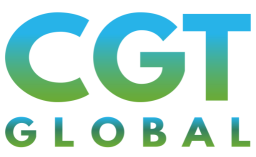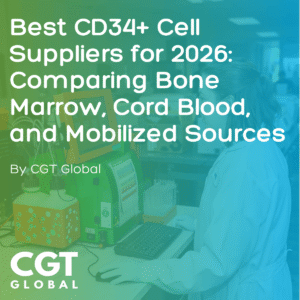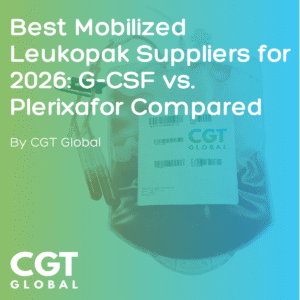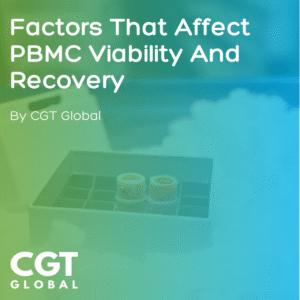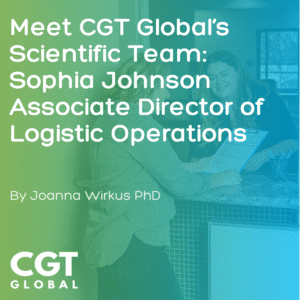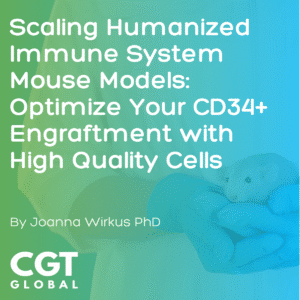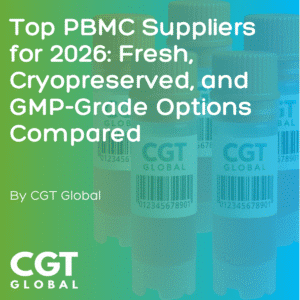Estimated reading time: 5 minutes
Table of contents
- CD34+ Cell Isolation Process
- Bryan Pulling – Laboratory Operations Manager
- What types of cells can you isolate and what cell type are we isolating today?
- What is the procedure for isolating CD34+ cells?
- How do you define and measure the quality of isolated cell samples?
- How common are CD34+ cells?
- What are common applications for CD34+ cells?
CD34+ Cell Isolation Process
Previously in our Meet the Scientific Team blog, we gained insight into the background of CGT Global’s Laboratory Operations Manager in Folsom, California — Bryan — and his inspiration for his work. Today, we go behind the scenes, or behind the bench, to see what a day in the life of a cell biologist really looks like and how CD34+ stem cells are isolated at CGT Global’s laboratories.
Bryan Pulling – Laboratory Operations Manager
Bryan Pulling has been with CGT Global for over nine years. He holds a degree in Biology with an emphasis in Physiology from California State University, Long Beach. During summer breaks in college, he donated cells at CGT Global’s Folsom, CA stem cell collection center. After graduating, he joined CGT Global as a Laboratory Technician.
Wearing many different hats, Bryan expanded his knowledge beyond the lab into the collection clinics which led him to be well versed in day-to-day operations across the stem cell collection continuum.
With his expertise in clinical procedures and laboratory protocols, he played a pivotal role in opening a new stem cell collection center in Boston, MA, serving as the Site Manager. Several years later, his passion for lab work led him to the role of Laboratory Operations Manager.
In 2020, Bryan returned to Folsom to lead the COVID testing program. During this period, he implemented an Electronic Health Record system, enabling patients to quickly access their test results. After community COVID testing needs declined, he’s continued as the Laboratory Operations Manager, overseeing all CGT Global laboratories.
Outside the lab, he enjoys hiking in the mountains, fishing in lakes and streams, and training for his next big run.
Add Bryan on LinkedIn – he welcomes new connections in the research community!
What types of cells can you isolate and what cell type are we isolating today?
The different types of cells that we can isolate range from:
- Mononuclear cells, which are all white blood cells except for granulocytes.
We can go into further subsets of those cells, which would be:
- Even neutrophils, which are made to order
Today, we’re isolating CD34+ cells — which are the most requested cell type.
These cells were obtained from a donor who was mobilized with five days of G-CSF and one day of plerixafor and were collected using apheresis.
What is the procedure for isolating CD34+ cells?
To isolate CD34+ cells using positive selection we:
Lyse the red blood cells (RBC)
- The RBC lysis gets rid of all the red blood cells, leaving behind platelets and white blood cells.
Remove platelets
- To remove platelets, we do slow spins in the centrifuge until the sample is clear.
MNC stage
- With the RBC and plate
- lets removed, the mononuclear cells are left.
Characterize the sample
Using a MACSQuant flow cytometer, we determine what percentage of the sample is CD34+ cells.
Labeling with anti-CD34+ antibody and magnetic beads
- Next, we add a kit with CD34+ specific antibodies and magnetic beads.
- The antibody binds to the CD34+ cells, and the magnetic beads binds to that antibody.
Isolation
- After an incubation period, we pass the cell suspension over magnetic columns. The CD34+ cells stick to the magnet. Then we plunge the columns into a conical tube, and that yields our CD34+ stem cells.
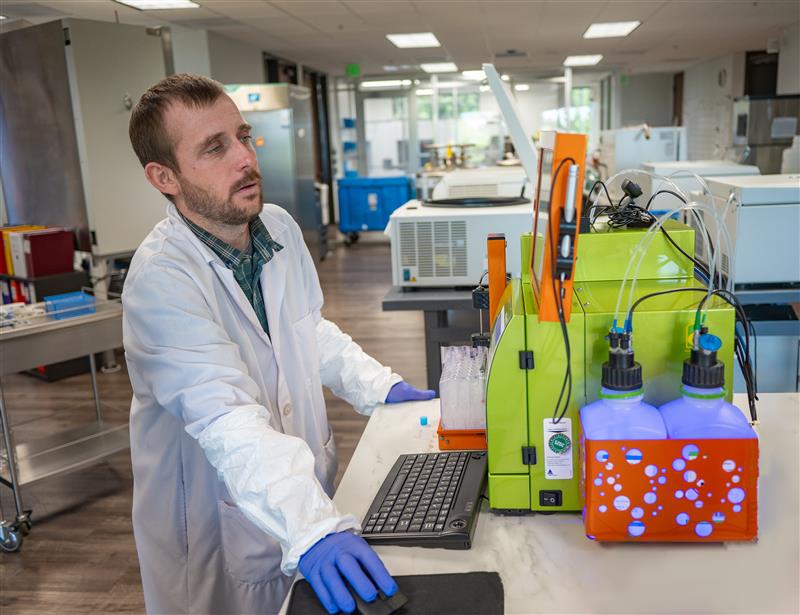
How do you define and measure the quality of isolated cell samples?
For fresh cells, cell quality is defined by viability, purity, and the cell count.
Cell viability is the percent of live, healthy cells. Cells must be greater than 95% viable to meet our quality standards.
Cell purity characterizes the percent of the cells in the sample that are CD34+ positive.
With the MACSQuant flow cytometer, we stain our sample with CD45-FITC, CD34-APC, and DAPI. This gives us the number of white blood cells and the number of CD34+ cells in our sample. We measure this at the MNC stage to check how many cells we have in the sample and again after the isolation to confirm the purity of the sample. Cell purity must be at least 90% to pass quality standards.
Cell count is how many cells are in the sample. We measure cell numbers in duplicate using the automated NucleoCounter. We guarantee the cell count on every product.
For a mobilized Leukopak like we are isolating today, we typically see 99% viability and 99% purity.
How common are CD34+ cells?
CD34+ cells are quite rare in the human body.
In fact, here is some data about CD34+ cells as a percentage of mononuclear cells (MNC) from bone marrow, peripheral blood and cord blood from our laboratory.
| CD34+ Source | CD34+ / MNC |
| Bone marrow | 1-3% |
| Peripheral blood | 0.03-0.07% |
| Mobilized peripheral blood | 1-3% |
| Umbilical cord blood | 0.3-1% |
What are common applications for CD34+ cells?
A common application for CD34+ cells is in humanized mice. The stem cells are grafted into mice, where they can turn into any type of white blood cell in the body. This allows researchers to test different treatments using an immune system that closely resembles that of a human.
The precision required to isolate CD34+ cells with 99% viability and purity reflects CGT Global’s high-quality standards—standards that go beyond technical skill in our lab; it’s about the scientists counting on us to get it right. Our committed team drives vital scientific discoveries by delivering top-quality materials that equip researchers to make a real difference. By testing new treatments in clinically-relevant, humanized mouse models, these rare stem cells help transform today’s bench work into tomorrow’s therapies for the patients who need them most.
On a mission to transform the life science and medical industries, CGT Global has been supporting biotech, pharma, and academic scientists developing next-generation therapeutics through biospecimen procurement and primary cell isolation for 15 years.
If you’re looking for primary stem cells for your next research project, connect with us on our website CGT.global and follow us on LinkedIn to stay up to date on our latest product releases, research insights, and industry news.
